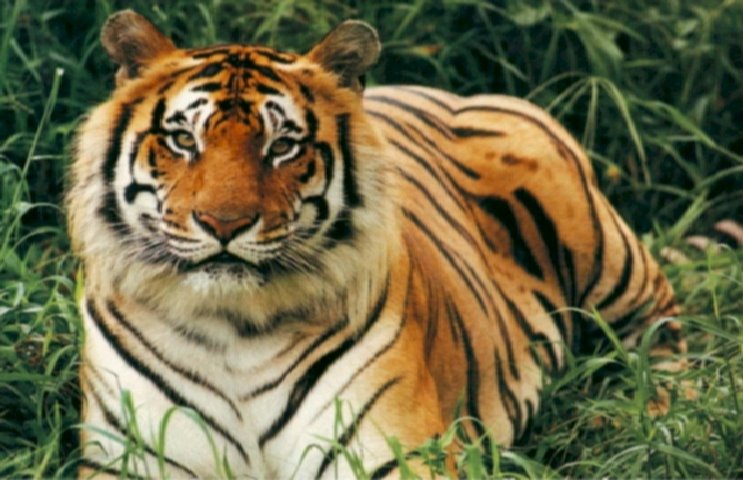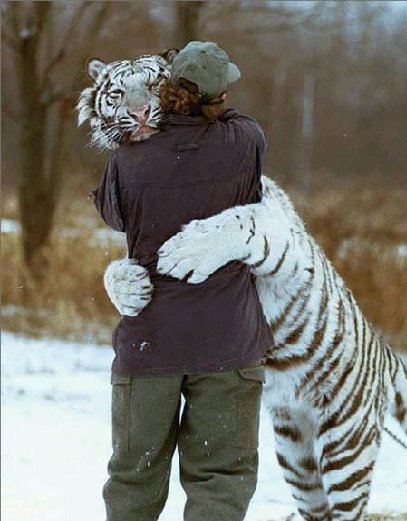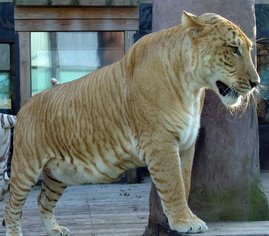TIGERS DIET
Tigers hunt primarily between dusk and dawn, and they attack using the same method as do the lions. They stalk, chase, and attack, bringing down and killing the prey with usually a bite to the nape of the neck or the throat. The bite to the throat allows the tiger the ability to suffocate the prey bringing death relatively quickly and painlessly. Smaller animals are often killed with the bite to the nape of the neck allowing the tiger to to fracture the vertebrae and compress the spinal chord of its victim. Once killed, the tiger either drags or carries its meal into cover. The tiger's enormous strength allows it to drag an animal that would require 13 adult men to move. Tigers consume anywhere from 35 - 90 pounds of meat at one sitting, beginning at the rump of the prey. If undisturbed, they will return to the carcass for 3-6 days, feeding until it has completely consumed its kill. Because tigers are not the most successful of hunters, only killing 1 in every 10-20 attempts, it may be several days before it has its next meal. In the wild, cooperative hunting among tigers has also been observed where couples and families hunted like a pride of lions. This, however, is the exception not the rule. Unlike the other felids, man is a regular part of the tiger's diet and has earned them greatest reputation as man-eaters. The most common prey items are various species of deer and pig, but they will also take crocodiles, young elephants and rhinos, monkeys, birds, fish, leopards, bears, and even their own kind. They have also been reported to eat carrion.






No comments:
Post a Comment